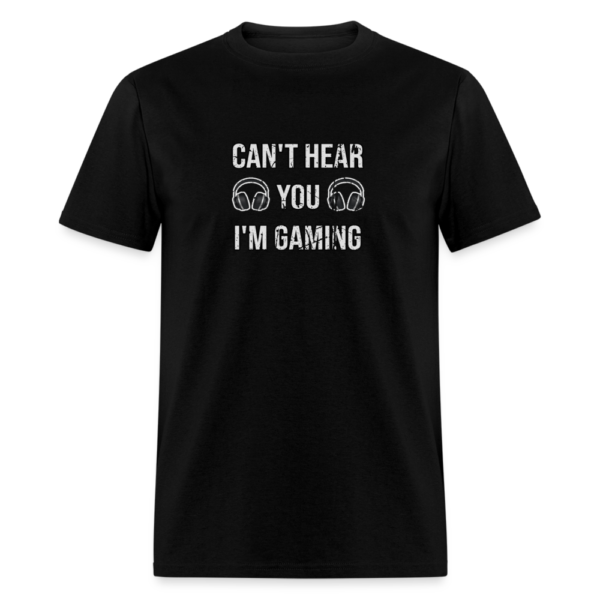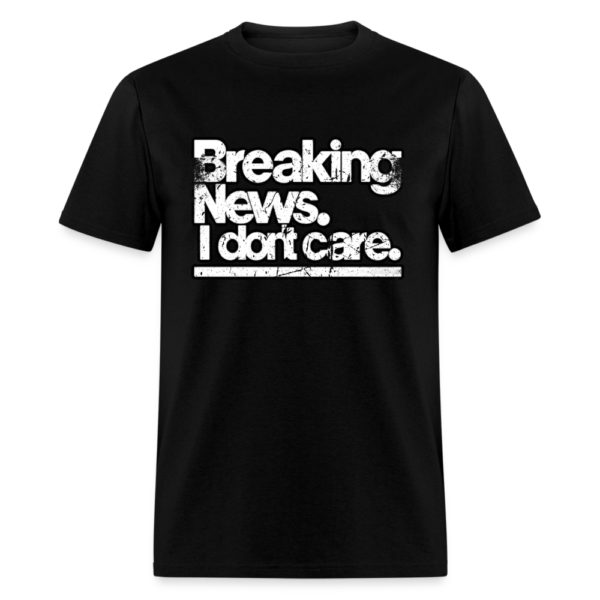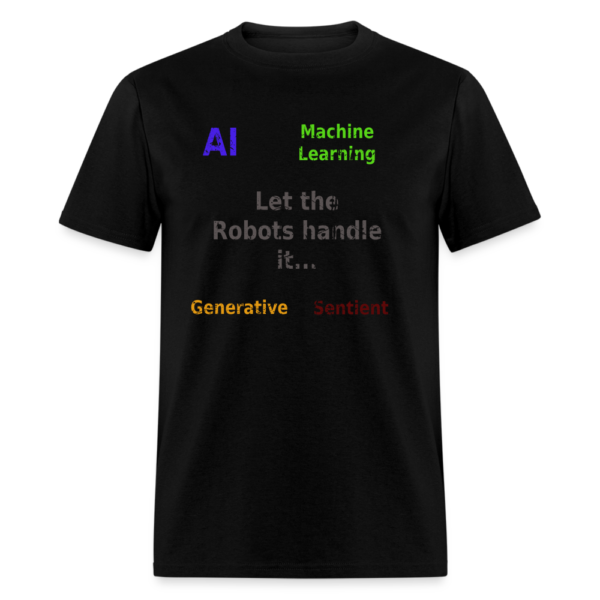Your cart is currently empty!
Category: TECH
Why the Mainstream Should Care About OpenAI’s GPT-4.5 “O3”
Artificial Intelligence (AI) continues to redefine how we live, work, and interact with technology. OpenAI, a leader in AI innovation, recently unveiled its latest iteration, GPT-4.5, colloquially referred to as “O3.” This new model builds on the revolutionary advancements of GPT-4, aiming to bridge gaps between AI capabilities and real-world applications. But why should the average person care? Here’s a deep dive into what makes OpenAI’s O3 groundbreaking and why its impact on mainstream society cannot be ignored.
1. Enhanced Usability for Everyday Tasks
One of O3’s standout features is its improved user interface and adaptability for non-technical users. Previous AI models often required a learning curve to harness their full potential. O3 changes the game by integrating features like natural language queries, voice-to-text capabilities, and intuitive responses that feel conversational rather than robotic.
Imagine a busy parent managing household chores, school schedules, and a demanding job. With O3, they can:
- Draft professional emails in seconds.
- Generate personalized shopping lists based on past purchases.
- Provide on-the-fly homework assistance for their children.
By simplifying access to AI tools, O3 ensures that technology serves as an ally, not an obstacle.
2. Revolutionizing the Workplace
OpenAI’s O3 is not just a tool for individuals; it’s also poised to transform workplaces across industries. Here’s how:
- Customer Service: O3’s enhanced comprehension of context and emotion allows businesses to deploy more empathetic and effective virtual assistants, reducing the need for extensive human intervention.
- Content Creation: Writers, marketers, and designers can rely on O3 for idea generation, editing, and even creating ad copy tailored to specific audiences.
- Data Analysis: Complex data sets can be distilled into actionable insights within minutes, empowering businesses to make informed decisions faster.
For mainstream professionals, O3 minimizes repetitive tasks, enabling them to focus on strategic, high-value activities.
3. Democratizing Education
Access to quality education remains a global challenge. O3’s advanced learning capabilities have the potential to revolutionize education by:
- Providing personalized tutoring for students at all levels.
- Translating and localizing educational content for underserved communities.
- Offering real-time feedback on assignments and assessments.
Parents, teachers, and students can harness O3 to bridge gaps in learning, making education more accessible and equitable worldwide.
4. Boosting Creative Endeavors
Artists, musicians, and creators are embracing AI as a collaborator rather than a competitor. O3 enhances creative processes by:
- Generating unique visual art concepts.
- Assisting in composing music tailored to specific emotions or themes.
- Offering feedback on scripts, novels, or screenplays.
For creators, O3 serves as a muse, sparking innovation and pushing boundaries in ways that were previously unimaginable.
5. Elevating Healthcare Solutions
Healthcare is one of the most promising fields for AI innovation, and O3 doesn’t disappoint. Its advancements include:
- Faster and more accurate analysis of medical records and imaging.
- Generating treatment plans tailored to individual patient histories.
- Offering emotional support for patients through conversational AI.
O3’s impact on healthcare not only improves patient outcomes but also alleviates the burden on medical professionals.
6. Prioritizing Ethical AI Use
One of the criticisms of previous AI models was their susceptibility to misuse, whether for spreading misinformation or perpetuating biases. OpenAI has addressed these concerns head-on with O3 by:
- Implementing advanced moderation techniques.
- Ensuring transparency in its decision-making processes.
- Actively collaborating with ethicists and regulators to minimize risks.
These safeguards make O3 a trustworthy tool for the mainstream, encouraging widespread adoption without compromising integrity.
7. Redefining Entertainment
O3 is reshaping how we consume and interact with entertainment. Its applications include:
- Generating immersive gaming experiences with dynamic, AI-driven narratives.
- Enhancing virtual reality environments for lifelike simulations.
- Personalizing media recommendations beyond simple algorithms.
For audiences, this means richer, more engaging experiences tailored to individual preferences.
8. Tackling Global Challenges
From climate change to disaster response, O3’s potential extends to solving some of humanity’s most pressing issues. For example:
- Climate Modeling: O3 can analyze complex environmental data to predict trends and recommend sustainable solutions.
- Disaster Management: During crises, O3’s real-time data analysis can help coordinate relief efforts and allocate resources efficiently.
Such applications underscore how AI can contribute to the greater good, making its benefits felt globally.
9. Accessibility for All
One of OpenAI’s missions is to make AI accessible to everyone, not just tech-savvy individuals. O3 aligns with this vision through:
- Affordability: Lower subscription costs and free-tier options ensure that even small businesses and individuals can access its capabilities.
- Language Diversity: O3 supports multiple languages, breaking down barriers for non-English speakers.
This inclusivity ensures that AI remains a tool for empowerment rather than exclusivity.
10. The Human-AI Partnership
The mainstream often fears that AI will replace human jobs and creativity. O3 challenges this notion by emphasizing collaboration. It’s not about humans versus machines but humans working alongside machines to achieve more. Whether it’s co-writing a novel, co-designing a product, or co-solving a scientific problem, O3 empowers individuals to amplify their potential.
Conclusion: A Paradigm Shift in AI Adoption
OpenAI’s O3 represents a paradigm shift in how AI integrates into daily life. By prioritizing usability, accessibility, and ethical considerations, it’s poised to bring AI from niche circles into the mainstream. For individuals, businesses, and society at large, O3 isn’t just an upgrade; it’s an invitation to reimagine what’s possible when human ingenuity meets machine intelligence.
The question isn’t whether the mainstream should care about O3. The real question is: How soon will you start leveraging its potential to transform your world?
Recommended products
-
Vintage Let the robots handle it – ai ml generative sentient Unisex Classic T-Shirt
-
Vintage AI Robot Drum Machine Crewneck Sweatshirt
-
Vintage AI Robot Drum Machine Sticker
-
Anime Robot Saying “Be Human”Unisex Classic T-Shirt
-
Vintage AI Robot Drum Machine Unisex Classic T-Shirt
-

Hungry and Humble Football Player Flapping Arms Touchdown Celebration Unisex Classic T-Shirt #philly
$19.99 Select options This product has multiple variants. The options may be chosen on the product page -

Africatown in Philly Phrase Unisex Classic T-Shirt
$13.99 Select options This product has multiple variants. The options may be chosen on the product page -

Vintage Funny Cat Selfie UFO Alien Invasion Unisex Classic T-Shirt
$13.99 Select options This product has multiple variants. The options may be chosen on the product page -

Vintage Philly Underdogs German Shepherds Unisex Classic T-Shirt
$9.99 Select options This product has multiple variants. The options may be chosen on the product page -

Voxel Art Hockey Players Unisex Classic T-Shirt
$19.99 Select options This product has multiple variants. The options may be chosen on the product page
————————————————
We use AI GPT Chatbots to help with our content and may get some things wrong.
————————————————-
The Australian Swagbot: Revolutionizing Cattle Herding with Robotics
In the vast, rugged landscapes of Australia’s outback, cattle herding has traditionally been a physically demanding and time-consuming task. However, the advent of the Australian swagbot has been a game-changer, revolutionizing how livestock is managed. This innovative robot, designed to assist farmers in the challenging task of herding cattle, is a prime example of how robotics and technology are transforming agriculture. In this blog post, we’ll delve into the history, development, and impact of the swagbot, exploring how it is shaping the future of cattle farming in Australia and beyond.
What is the Australian Swagbot?
The Australian swagbot is a fully autonomous robot developed to help manage cattle herding in remote areas of the country. It is designed to travel over rough terrains and navigate the wide expanses of farmland, where human presence may be limited due to distance or difficult conditions. Swagbot is capable of independently herding cattle, monitoring their movements, and ensuring they stay within designated areas, making it an invaluable tool for modern-day farmers.
The name “swagbot” is derived from the Australian term “swag,” which refers to the portable bedroll or bundle of belongings traditionally carried by Australian travelers and bushmen, commonly referred to as “swagmen.” The term is a fitting nod to the robot’s ability to traverse the outback, much like the swagman of old, albeit with a much more technological edge.
The Development of the Swagbot
The swagbot was developed by a team of researchers from the University of Sydney, in collaboration with the CSIRO (Commonwealth Scientific and Industrial Research Organisation). It is the result of years of research into robotics and artificial intelligence aimed at making cattle herding more efficient and less labor-intensive.
The primary goal behind the creation of the swagbot was to address the challenges faced by farmers in the Australian outback, where large herds of cattle roam across vast distances. Traditional herding methods often require human labor, sometimes with the help of dogs or helicopters. However, these methods can be expensive, time-consuming, and not always practical for large, remote areas.
To address these issues, the University of Sydney’s robotics team sought to create a robot capable of performing many of the same tasks as a human cattle herder. The result was the swagbot, a robot equipped with advanced sensors, GPS, and machine learning algorithms to help it navigate and communicate with cattle in real-time.
Key Features of the Swagbot
1. Autonomous Navigation
One of the standout features of the swagbot is its ability to navigate autonomously across challenging terrains. The robot uses advanced GPS systems, sensors, and cameras to map out its environment and move across fields, hills, and rough roads. This allows it to travel long distances without the need for human supervision, making it highly efficient in the vast, sparsely populated regions of Australia.
2. Cattle Herding Capabilities
The swagbot is designed to herd cattle much like a human would. It can identify individual cattle, monitor their movements, and ensure they stay within a designated area. Using a combination of sound, motion, and visual cues, the swagbot can guide cattle and prevent them from wandering off or getting separated from the herd.
3. Real-Time Monitoring
The swagbot is equipped with an array of sensors that monitor the health and behavior of the cattle in real-time. These sensors can detect signs of distress, such as a cow that is separated from the herd or injured. The data collected by these sensors can be sent back to the farmer in real-time, allowing them to respond quickly to any issues that may arise.
4. Weather Resilience
Australia’s weather conditions can be extreme, with scorching heat, heavy rains, and strong winds all posing challenges for traditional herding methods. The swagbot is designed to withstand these harsh conditions, making it a reliable tool for year-round use. Whether it’s navigating through mud or dealing with the sweltering heat of summer, the swagbot is built to handle it all.
5. Environmentally Friendly
The swagbot is an environmentally friendly alternative to traditional cattle herding methods. Unlike helicopters or trucks, which can produce significant carbon emissions, the swagbot is designed to be energy-efficient, using renewable energy sources like solar power. This makes it an ideal solution for sustainable farming practices, reducing the environmental impact of large-scale cattle farming.
How the Swagbot is Changing Cattle Herding in Australia
The introduction of the swagbot has had a profound impact on the way cattle herding is conducted in Australia. Here are some of the key benefits it provides to farmers:
1. Cost-Effective Operations
Traditionally, cattle herding required significant labor, often involving a team of workers and animals. With the swagbot, farmers can reduce the need for human workers, minimizing labor costs. The robot’s ability to herd cattle autonomously and monitor their health also means fewer resources are needed for day-to-day operations.
2. Improved Efficiency
The swagbot’s ability to work around the clock, 24/7, ensures that cattle herding is more efficient than ever before. It can cover large distances in a fraction of the time it would take a human to do the same job. Additionally, by collecting real-time data on the cattle, the swagbot enables farmers to make better-informed decisions about their livestock management.
3. Better Animal Welfare
With the swagbot, farmers can monitor the well-being of their cattle more closely. The robot can alert farmers to any signs of distress, injury, or illness in the herd. By catching these issues early, farmers can provide timely intervention and care, improving the overall health and welfare of the livestock.
4. Addressing Labor Shortages
In rural areas of Australia, labor shortages can make it difficult to find enough workers to manage large cattle farms. The swagbot helps to alleviate this problem by performing many of the tasks that would normally require human workers. This is particularly useful for farmers who may be operating in remote areas where hiring labor can be challenging.
5. Supporting Sustainable Practices
Sustainability is a major concern in modern agriculture, and the swagbot is helping to promote more sustainable farming practices. With its low energy consumption, efficient operation, and ability to reduce the need for fossil fuel-powered vehicles, the swagbot is contributing to a more eco-friendly approach to cattle herding.
The Future of the Swagbot
The success of the swagbot in Australia has opened up new possibilities for the future of cattle herding worldwide. While the technology is still in its early stages, there are plans to further develop and refine the swagbot’s capabilities. Future versions of the robot may feature even more advanced AI, greater energy efficiency, and the ability to work in even more diverse environments.
In addition to cattle herding, the technology behind the swagbot has potential applications in other areas of agriculture. From crop monitoring to pest control, the possibilities for autonomous robots in farming are vast.
Conclusion
The Australian swagbot represents a significant leap forward in the world of agriculture. By combining robotics, AI, and renewable energy, it is revolutionizing cattle herding and offering farmers a more efficient, cost-effective, and sustainable way to manage their livestock. As technology continues to advance, the swagbot and similar innovations will likely play an increasingly important role in the future of farming, not just in Australia, but around the world.
Vintage Let the robots handle it – ai ml generative sentient Unisex Classic T-Shirt
$13.99Vintage Let the robots handle it – ai ml generative sentient Unisex Classic T-Shirt. Kick back and relax with the Vintage ‘Let the Robots Handle It’ T-Shirt! Perfect for AI enthusiasts and tech lovers who know the future is automated—because why do it yourself when a robot can do it better?
-

Hungry and Humble Football Player Flapping Arms Touchdown Celebration Unisex Classic T-Shirt #philly
$19.99 Select options This product has multiple variants. The options may be chosen on the product page -

Africatown in Philly Phrase Unisex Classic T-Shirt
$13.99 Select options This product has multiple variants. The options may be chosen on the product page -

Vintage Funny Cat Selfie UFO Alien Invasion Unisex Classic T-Shirt
$13.99 Select options This product has multiple variants. The options may be chosen on the product page -

Vintage Philly Underdogs German Shepherds Unisex Classic T-Shirt
$9.99 Select options This product has multiple variants. The options may be chosen on the product page -

Voxel Art Hockey Players Unisex Classic T-Shirt
$19.99 Select options This product has multiple variants. The options may be chosen on the product page
————————————————
We use AI GPT Chatbots to help with our content and may get some things wrong.
————————————————-
-
Derek Anderson: Engineering Leader Driving Web3 Innovation with BLESS Network
In a world rapidly evolving towards decentralization and Web3 technologies, few leaders stand out as pioneers. Derek Anderson, a seasoned engineering leader, is one such individual making monumental strides in building distributed networks and empowering teams to achieve the Web3 vision. With the BLESS Network emerging as a groundbreaking project, Anderson’s leadership and engineering expertise have been pivotal in crafting one of the most ambitious decentralized systems in the world.
What is the BLESS Network?
The BLESS Network is not just another tech project; it’s a revolutionary step toward creating the world’s largest shared supercomputer. By leveraging distributed and decentralized systems, the network epitomizes the ethos of Web3—an internet owned by its users, free from centralized institutional control. Some recent statistics from BLESS Network highlight its extraordinary achievements:
- 620,291 total nodes created across the network, showcasing its massive scale and adoption.
- 419,871 distinct active IPs identified, demonstrating robust activity and engagement.
- Representation in 208 territories out of 237 globally, even including Antarctica.
- 13,681 cities contributing to the mission of decentralization and shared computing power.
These figures reflect not just the success of the network but also the meticulous planning, innovation, and perseverance of its founding members and team, led by Derek Anderson.
Challenges and Triumphs
Anderson’s journey with the BLESS Network hasn’t been without hurdles. Like any groundbreaking project, it has faced its share of detractors and skeptics. However, Anderson and his team have always remained steadfast in their mission.
“We knew we were doing something that needs to be done,” Anderson remarked in a recent update. “We believed we could do it. And we’re doing it.”
This determination underscores the resilience of Anderson’s leadership. Building a decentralized network of this magnitude requires not just technical prowess but also the ability to inspire a team and community to persist through challenges.
The Role of Teamwork
One of the defining features of Anderson’s leadership style is his emphasis on teamwork. He credits much of the success of the BLESS Network to the relentless efforts of his team, including notable contributors like Butian L., Liam Zhang, and Michael Chen.
“The team makes the dream,” Anderson often says, highlighting the collaborative effort required to bring such a transformative vision to life. From software engineers to community managers, every team member plays a crucial role in shaping the future of decentralized computing.
Engineering Excellence
Anderson’s background as an engineering leader has been instrumental in driving BLESS Network’s success. With a career spanning multiple high-profile roles in technology, he brings a wealth of experience to the table. His ability to architect scalable, secure, and efficient systems is evident in the network’s impressive statistics.
Under Anderson’s guidance, the BLESS Network has implemented innovative solutions to ensure its scalability and security. By leveraging cutting-edge blockchain technology and advanced distributed computing algorithms, the network is setting new benchmarks for decentralized systems.
Empowering Global Participation
A key aspect of the BLESS Network’s success is its inclusivity. With participation spanning 208 territories, the project has truly achieved a global footprint. By enabling users from diverse backgrounds to contribute to and benefit from the network, Anderson is democratizing access to computing power.
This inclusivity also extends to the network’s governance. True to the principles of Web3, BLESS Network is designed to be governed by its users, ensuring that decisions reflect the collective will of the community rather than a centralized authority.
The Future of BLESS Network
As the BLESS Network continues to roll out its Test Net, the future looks incredibly promising. The project is well on its way to becoming the world’s largest shared supercomputer, powered by the collective efforts of individuals and communities around the globe.
For Anderson, this is just the beginning. With his unwavering commitment to innovation and his team’s support, the BLESS Network is poised to revolutionize the way we think about computing and the internet.
Conclusion
Derek Anderson is more than an engineering leader; he’s a trailblazer in the Web3 revolution. Through the BLESS Network, he’s demonstrating what’s possible when technology is harnessed for the collective good. With a clear vision, a dedicated team, and a commitment to innovation, Anderson is helping to shape a decentralized future that belongs to all of us.
As the world moves closer to realizing the promise of Web3, the contributions of leaders like Derek Anderson will remain invaluable. The journey may be challenging, but with visionaries like Anderson at the helm, the destination is well within reach.
-

Hungry and Humble Football Player Flapping Arms Touchdown Celebration Unisex Classic T-Shirt #philly
$19.99 Select options This product has multiple variants. The options may be chosen on the product page -

Africatown in Philly Phrase Unisex Classic T-Shirt
$13.99 Select options This product has multiple variants. The options may be chosen on the product page -

Vintage Funny Cat Selfie UFO Alien Invasion Unisex Classic T-Shirt
$13.99 Select options This product has multiple variants. The options may be chosen on the product page -

Vintage Philly Underdogs German Shepherds Unisex Classic T-Shirt
$9.99 Select options This product has multiple variants. The options may be chosen on the product page -

Voxel Art Hockey Players Unisex Classic T-Shirt
$19.99 Select options This product has multiple variants. The options may be chosen on the product page
————————————————
We use AI GPT Chatbots to help with our content and may get some things wrong.
————————————————-
The Microchip: Invention, Evolution, and Its Profound Impact on Our World
Microchips, the tiny marvels of technology, have revolutionized the modern world. These small, integrated circuits serve as the backbone of countless devices, from smartphones to space shuttles. Their invention marked a turning point in human history, enabling advancements that were once the realm of science fiction. In this blog post, we’ll explore the history of microchips, the genius behind their invention, and how they continue to transform industries and everyday life.
The Birth of the Microchip: A Revolutionary Idea
The invention of the microchip dates back to the mid-20th century, when the need for smaller, faster, and more efficient electronic devices grew. Before microchips, electronic circuits were made using bulky vacuum tubes and mechanical relays. These early systems were not only large but also consumed a significant amount of energy and were prone to failure.
In 1958, the solution to these challenges emerged. Jack Kilby, an engineer at Texas Instruments, created the first integrated circuit, or microchip. His innovation involved integrating all electronic components—transistors, resistors, and capacitors—onto a single piece of semiconductor material. This breakthrough reduced the size of electronic circuits dramatically while increasing reliability. Shortly thereafter, Robert Noyce of Fairchild Semiconductor refined Kilby’s design, making it easier to manufacture. Noyce’s contribution earned him the nickname “The Mayor of Silicon Valley.”
How Microchips Work
At its core, a microchip is a collection of electronic circuits etched onto a small wafer of silicon. Silicon, an abundant element, is a perfect semiconductor, allowing it to conduct electricity under certain conditions. By manipulating the properties of silicon through doping (adding impurities), engineers create pathways for electric signals to flow in precise patterns.
Transistors, the building blocks of microchips, act as tiny switches that control the flow of electricity. Modern microchips contain billions of transistors packed into a space no larger than a fingernail. These transistors work in unison to process data, perform calculations, and execute commands.
The Evolution of Microchips
From their humble beginnings in the 1960s, microchips have undergone a remarkable evolution. Early integrated circuits were relatively simple, containing just a few transistors. The advent of Moore’s Law in 1965, named after Intel co-founder Gordon Moore, predicted the doubling of transistors on a chip approximately every two years. This observation has largely held true, driving exponential growth in computing power.
Today, advanced microchips are produced using nanometer-scale technology, with transistors as small as 2 nanometers—thousands of times smaller than a human hair. This miniaturization has enabled the creation of supercomputers, smartphones, artificial intelligence (AI) systems, and other cutting-edge technologies.
Microchips in Everyday Life
Microchips are ubiquitous in the modern world, touching virtually every aspect of our daily lives. Here are some key areas where microchips have made a profound impact:
- Consumer Electronics
Smartphones, laptops, smartwatches, and gaming consoles all rely on microchips to function. These devices have transformed how we communicate, work, and entertain ourselves. For instance, the processors in smartphones enable complex tasks like facial recognition, voice commands, and high-resolution photography. - Healthcare
In medicine, microchips power diagnostic devices, wearable health monitors, and advanced imaging systems. They are also used in implanted devices like pacemakers and insulin pumps, improving patient outcomes and saving lives. - Automotive Industry
Modern cars are equipped with dozens of microchips that control everything from engine performance to advanced driver-assistance systems (ADAS). Electric vehicles (EVs) and autonomous cars heavily depend on sophisticated chips to operate safely and efficiently. - Aerospace and Defense
Satellites, aircraft, and military equipment use microchips for navigation, communication, and mission-critical operations. These technologies have expanded humanity’s reach beyond Earth and strengthened global security. - Smart Homes and IoT
The Internet of Things (IoT) has brought microchips into our homes, enabling smart thermostats, security cameras, and voice assistants like Amazon Alexa and Google Home. These devices make life more convenient and energy-efficient.
Microchips and Economic Growth
The microchip industry is a cornerstone of the global economy. Countries with advanced semiconductor industries, such as the United States, South Korea, Taiwan, and China, are leaders in technology innovation. The global semiconductor market is worth hundreds of billions of dollars annually and continues to grow.
Moreover, the demand for microchips has created jobs and spurred technological advancements in related fields, including software development, robotics, and telecommunications.
Challenges in the Microchip Industry
Despite their transformative power, microchips face challenges, such as:
- Supply Chain Issues: The COVID-19 pandemic highlighted vulnerabilities in global chip supply chains, leading to shortages that affected industries worldwide.
- Environmental Concerns: Microchip production is resource-intensive, consuming large amounts of water and energy. Finding sustainable manufacturing practices is critical.
- Geopolitical Tensions: The semiconductor industry is at the center of global trade disputes, as countries vie for technological supremacy.
The Future of Microchips
The future of microchips is exciting, with several groundbreaking advancements on the horizon:
- Quantum Computing
Quantum chips, which use quantum bits (qubits) instead of traditional bits, promise unprecedented computing power. They could revolutionize fields like cryptography, drug discovery, and artificial intelligence. - Neuromorphic Chips
Inspired by the human brain, neuromorphic chips aim to mimic neural networks, enabling machines to process information more like humans. These chips could accelerate the development of AI and robotics. - Flexible and Wearable Electronics
Advances in materials science are leading to flexible microchips that can be integrated into wearable devices, opening new possibilities for health monitoring and augmented reality. - Self-Healing Chips
Researchers are exploring microchips with self-repairing capabilities, which could enhance durability and reliability, especially in critical applications like space exploration.
Conclusion
The invention of the microchip has profoundly shaped the modern world. From shrinking computers to enabling the rise of artificial intelligence, microchips are the unsung heroes behind countless innovations. As technology continues to evolve, microchips will remain at the forefront, driving progress and redefining what’s possible.
For businesses, researchers, and individuals, understanding the significance of microchips is more important than ever. They are not just components of our devices; they are the building blocks of our future.
-

Hungry and Humble Football Player Flapping Arms Touchdown Celebration Unisex Classic T-Shirt #philly
$19.99 Select options This product has multiple variants. The options may be chosen on the product page -

Africatown in Philly Phrase Unisex Classic T-Shirt
$13.99 Select options This product has multiple variants. The options may be chosen on the product page -

Vintage Funny Cat Selfie UFO Alien Invasion Unisex Classic T-Shirt
$13.99 Select options This product has multiple variants. The options may be chosen on the product page -

Vintage Philly Underdogs German Shepherds Unisex Classic T-Shirt
$9.99 Select options This product has multiple variants. The options may be chosen on the product page -

Voxel Art Hockey Players Unisex Classic T-Shirt
$19.99 Select options This product has multiple variants. The options may be chosen on the product page
————————————————
We use AI GPT Chatbots to help with our content and may get some things wrong.
————————————————-
- Consumer Electronics
The Discovery of Electricity: A Vision of a World Powered Exclusively by Electric Energy
The discovery of electricity stands as one of humanity’s most groundbreaking achievements, transforming nearly every aspect of modern life. From its earliest exploration by the Greeks, who noticed static electricity when rubbing amber, to the revolutionary work of pioneers like Benjamin Franklin, Alessandro Volta, Michael Faraday, and Nikola Tesla, electricity has evolved from a scientific curiosity into the backbone of contemporary technology, industry, and society.
But imagine if electricity were the only form of energy humanity ever utilized. What would our history, technology, society, and the world at large look like if we had relied solely on electric power instead of harnessing fossil fuels, wind, solar, or nuclear energy? This thought experiment reveals the transformative potential and limitations of electricity as humanity’s singular energy source.
Electricity’s Early Discovery and Development
Electricity began its journey into human awareness as a phenomenon observed in nature. Ancient Greeks, circa 600 BCE, described static electricity, while lightning—nature’s most dramatic electric display—fascinated and inspired civilizations for centuries. Benjamin Franklin’s famous kite experiment in 1752 marked a turning point in understanding electricity as a force that could be studied, manipulated, and potentially harnessed.
The 19th century saw significant progress in the practical application of electricity. Alessandro Volta invented the first true battery, the voltaic pile, in 1800, providing a steady flow of electric current. Michael Faraday’s work in electromagnetic induction and Nikola Tesla’s contributions to alternating current (AC) systems laid the foundation for modern electric power grids.
Reimagining History: A World Exclusively Powered by Electricity
If humanity had only ever harnessed electricity, history would have unfolded quite differently. Our dependence on firewood, coal, and oil for energy shaped much of industrial progress. In an all-electric world, key historical milestones would have pivoted on different axes.
- The Industrial Revolution:
The Industrial Revolution was fueled by steam engines powered by coal. In an all-electric world, the discovery of electric generators and motors would have been expedited. Factories might have operated with electric machinery decades earlier, reducing pollution but requiring more sophisticated methods of large-scale electricity generation. - Transportation:
Steamships and coal-powered locomotives were key to 19th-century globalization. An all-electric history would have necessitated the development of efficient batteries or electric rail systems much earlier. Electric vehicles would dominate by default, possibly giving rise to innovations in renewable electricity generation, like hydroelectric power, far earlier than in our timeline. - Urbanization and Infrastructure:
Without coal or gas for heating and lighting, cities would have been electrified much earlier. Imagine gas lamps replaced by electric bulbs in the early 1800s, fostering a cleaner and more visually striking urban environment. The electric grid, a lifeline of modern cities, might have developed into a global network long before the 20th century.
Technological Advancements in an Electric-Only World
- Energy Generation and Storage:
Relying entirely on electricity would have necessitated advancements in generation methods. Hydropower would likely have been the earliest dominant source due to its natural alignment with electricity generation. Wind turbines and solar panels, invented in the mid-20th century, might have appeared centuries earlier. Energy storage would also have seen rapid innovation. Without oil or coal, batteries would play a central role. Perhaps rechargeable battery technologies, like lithium-ion systems, would have emerged in the 19th century rather than the 20th, spurring the development of portable electric devices. - Communication Technology:
Electricity revolutionized communication, with the telegraph in the 19th century paving the way for the telephone, radio, and eventually the internet. In an all-electric world, society might have leapfrogged communication stages, creating global networks of interconnected devices far earlier. - Space Exploration:
Rockets, which today rely on chemical fuels, would have faced significant hurdles in an electric-only scenario. However, electric propulsion systems, like ion thrusters, could have been developed as the primary method of space travel, focusing on slow but efficient journeys beyond Earth.
Societal Implications of Electric Exclusivity
A world powered solely by electricity would reshape society on multiple levels. From the environment to everyday life, the absence of fossil fuels and other energy sources would produce a dramatically different civilization.
- Environmental Impact:
The absence of fossil fuel combustion would drastically reduce greenhouse gas emissions, preserving natural ecosystems. Smog-filled industrial cities of the 19th and 20th centuries would have been cleaner, potentially altering climate patterns and delaying the onset of global warming. - Urban and Rural Life:
Rural electrification would have been a priority much earlier, bridging the gap between urban and rural living standards. Electric-powered agriculture would revolutionize food production, leading to earlier advancements in automated farming. - Health and Safety:
Eliminating coal and gas would reduce respiratory illnesses caused by pollution. Electric heating and cooking systems would minimize the risks associated with open flames, contributing to safer homes and workplaces.
Challenges of an Electric-Only World
While electricity offers significant benefits, an exclusive reliance on it poses challenges.
- Dependence on Natural Electricity Sources:
Early reliance on hydroelectric power would require abundant rivers and dams, potentially leading to conflicts over water resources. Regions lacking natural electricity-generating features might face developmental delays. - Energy Transmission and Storage:
An electric-only world demands robust storage solutions and transmission systems. Without fossil fuels as backup, blackouts during storms or equipment failures would have greater consequences. - Economic and Geopolitical Shifts:
Without oil and coal industries, economies and geopolitical power dynamics would have shifted. Countries rich in water resources or rare materials for batteries would dominate, reshaping global alliances.
The World Today: Learning from the Electric Vision
Although we don’t live in a world powered solely by electricity, recent trends show a growing shift toward electrification. Renewable energy sources such as solar, wind, and hydro are increasingly replacing fossil fuels, and electric vehicles are on the rise. Battery technology is advancing rapidly, addressing the challenges of storage and reliability.
This vision of an electric-only world underscores the potential for humanity to innovate and adapt. While we may never eliminate all other energy forms, electricity’s versatility and efficiency make it a cornerstone of a sustainable future.
Conclusion: The Electric Dream
Electricity has always been a symbol of progress, illuminating our cities, powering our technologies, and driving our innovations. Imagining a world where it is the sole source of energy reveals both the incredible possibilities and significant challenges of such a scenario.
As we continue to transition to cleaner, more sustainable energy systems, electricity remains central to the vision of a greener planet. By embracing its potential while balancing the use of diverse energy sources, we can craft a future that reflects the best of what an all-electric world might have been—innovative, sustainable, and equitable for all.
-

Hungry and Humble Football Player Flapping Arms Touchdown Celebration Unisex Classic T-Shirt #philly
$19.99 Select options This product has multiple variants. The options may be chosen on the product page -

Africatown in Philly Phrase Unisex Classic T-Shirt
$13.99 Select options This product has multiple variants. The options may be chosen on the product page -

Vintage Funny Cat Selfie UFO Alien Invasion Unisex Classic T-Shirt
$13.99 Select options This product has multiple variants. The options may be chosen on the product page -

Vintage Philly Underdogs German Shepherds Unisex Classic T-Shirt
$9.99 Select options This product has multiple variants. The options may be chosen on the product page -

Voxel Art Hockey Players Unisex Classic T-Shirt
$19.99 Select options This product has multiple variants. The options may be chosen on the product page
————————————————
We use AI GPT Chatbots to help with our content and may get some things wrong.
————————————————-
- The Industrial Revolution:
Robot Umpires in Baseball: A Glimpse Into the Future of America’s Pastime
Baseball is a sport deeply rooted in tradition, evoking nostalgia for summer afternoons and the unmistakable sound of a bat connecting with a ball. Yet, as with all aspects of modern life, even America’s pastime is not immune to the relentless march of technology. One of the most talked-about advancements set to make a splash in the upcoming spring season is the potential full-scale implementation of robot umpires.
But what exactly are robot umpires, and how might they reshape the game? Let’s dive into the topic and explore what baseball fans, players, and coaches can expect.
What Are Robot Umpires?
The term “robot umpires” conjures images of humanoid machines calling balls and strikes, but the reality is far less sci-fi. Robot umpires refer to an Automated Ball-Strike System (ABS), which uses advanced cameras, radar, and machine learning algorithms to determine whether a pitch is a ball or a strike. The system relays its decision to the home-plate umpire, who announces it to the crowd.
The technology is not new. It has been tested in minor league baseball games over the past few years, including in the Arizona Fall League and certain Triple-A games. With the MLB’s continued investment in this technology, it seems more likely than ever that robot umpires could debut in major league games sooner rather than later.
The Case for Robot Umpires
1. Accuracy
Human umpires, no matter how skilled, are prone to errors. Studies have shown that umpires miss a small but impactful percentage of calls each game. These mistakes can drastically affect the outcome of games, particularly in high-stakes situations like playoff matches.
Robot umpires promise near-perfect accuracy. By using precise tracking systems, they eliminate subjective judgment and ensure consistency across games, leveling the playing field for pitchers and batters alike.
2. Speeding Up the Game
Baseball has faced criticism for its lengthy game times. Robot umpires could streamline gameplay by reducing arguments over disputed calls. With fewer delays caused by players and coaches debating strike zones, the pace of play may improve.
3. Fairness and Transparency
One of the biggest controversies in baseball is the variability of strike zones among umpires. Some umpires are known for “pitcher-friendly” zones, while others favor batters. Robot umpires enforce a consistent strike zone for all players, leaving no room for personal bias or varying interpretations of the rulebook.
Concerns About Robot Umpires
1. Loss of Tradition
Baseball purists argue that human umpires are an integral part of the game’s charm. The art of arguing a call, the drama of a close pitch, and the personal styles of umpires have become part of the sport’s fabric. Replacing these elements with cold, calculating machines risks stripping the game of some of its human character.
2. Technological Glitches
No system is perfect, and ABS technology is no exception. During testing, there have been instances where the system made questionable calls, such as labeling obvious balls as strikes or vice versa. A reliance on technology introduces the risk of malfunctions, potentially leading to even more contentious moments.
3. The Role of Human Umpires
If robot umpires take over the calling of balls and strikes, what happens to home-plate umpires? While they will likely remain on the field to manage other aspects of the game, such as foul tips or plays at the plate, their diminished role could affect the game’s dynamics. Players often rely on building rapport with umpires; this relationship could change significantly.
Impact on Players
Pitchers
For pitchers, robot umpires mean adapting to a precise strike zone. Gone are the days of “painting the corners” and hoping the umpire calls a borderline pitch in their favor. Pitchers will need to adjust their strategies, focusing more on accuracy and less on exploiting umpire tendencies.
Batters
Batters may also face challenges. They can no longer rely on studying umpire preferences to anticipate how a game will be called. While a consistent strike zone benefits them in theory, it may also require adjustments to their approach at the plate.
Fan Reactions
Fans are divided on the introduction of robot umpires. Many welcome the technology, believing it will enhance the game by eliminating bad calls. However, others lament the loss of the human element and worry that baseball could become too robotic and sterile.
The MLB has a delicate balancing act ahead: implementing robot umpires in a way that improves the game while maintaining its soul.
Looking Ahead: Spring Training and Beyond
The upcoming spring season presents a unique opportunity to further test and refine robot umpire systems. Fans attending spring training games may witness ABS in action, giving them a chance to form their own opinions.
If robot umpires prove successful, the MLB could announce a phased rollout, starting with regular-season games and potentially expanding to the postseason. However, MLB Commissioner Rob Manfred has emphasized that any implementation will be carefully considered, with input from players, coaches, and fans.
SEO Tips for Baseball-Related Websites
If you run a baseball blog, store, or fan site, the buzz around robot umpires is a prime SEO opportunity. Here’s how to capitalize on the topic:
- Use Trending Keywords: Include phrases like “robot umpires 2024,” “MLB Automated Ball-Strike System,” and “baseball technology advancements.”
- Write Timely Content: Publish articles in the lead-up to spring training to capture search traffic from curious fans.
- Engage with Fans: Post polls and questions on social media to spark debates about robot umpires.
- Offer Unique Angles: Consider interviews with players or coaches who have experienced ABS in the minor leagues.
- Link to Relevant Sources: Share links to official MLB statements, test results, or related news articles.
Conclusion
The introduction of robot umpires represents a pivotal moment in baseball’s evolution. While the technology offers undeniable benefits in terms of accuracy and fairness, it also raises important questions about tradition, human involvement, and the essence of the game.
As the spring season approaches, baseball fans should prepare for spirited debates and potentially game-changing innovations. One thing is certain: whether you’re cheering from the stands or analyzing every pitch at home, the 2025 baseball season is shaping up to be one for the history books.
-

Hungry and Humble Football Player Flapping Arms Touchdown Celebration Unisex Classic T-Shirt #philly
$19.99 Select options This product has multiple variants. The options may be chosen on the product page -

Africatown in Philly Phrase Unisex Classic T-Shirt
$13.99 Select options This product has multiple variants. The options may be chosen on the product page -

Vintage Funny Cat Selfie UFO Alien Invasion Unisex Classic T-Shirt
$13.99 Select options This product has multiple variants. The options may be chosen on the product page -

Vintage Philly Underdogs German Shepherds Unisex Classic T-Shirt
$9.99 Select options This product has multiple variants. The options may be chosen on the product page -

Voxel Art Hockey Players Unisex Classic T-Shirt
$19.99 Select options This product has multiple variants. The options may be chosen on the product page
————————————————
We use AI GPT Chatbots to help with our content and may get some things wrong.
————————————————-






